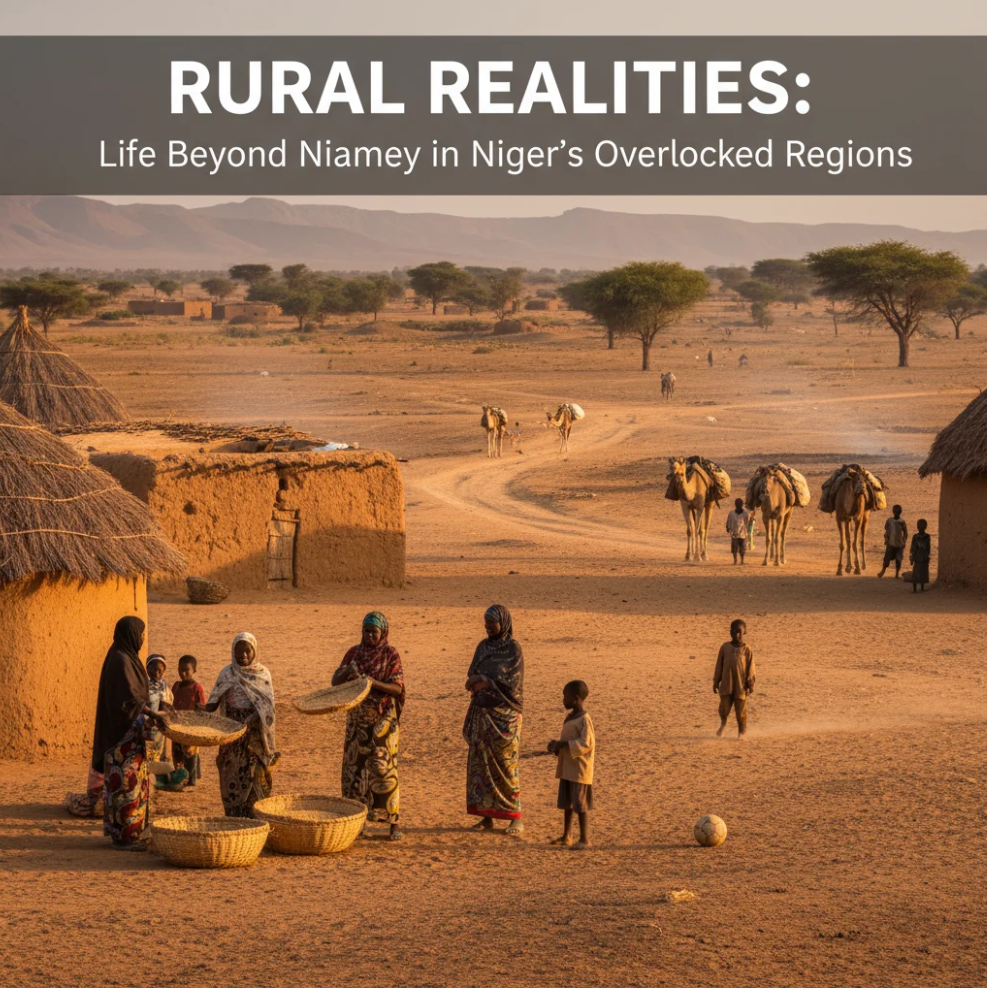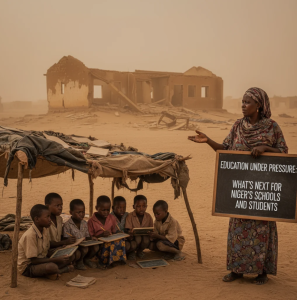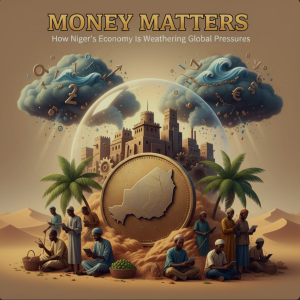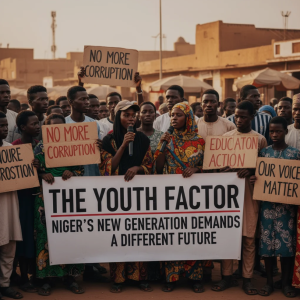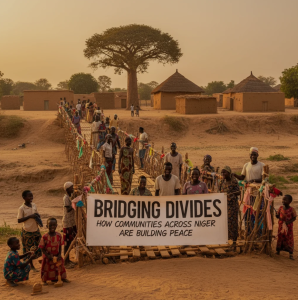While Niamey, Niger’s capital, continues to grow with new roads, schools, and modern businesses, a very different story unfolds just a few hours away.
In the rural regions beyond the city, life moves to a quieter rhythm — one defined by resilience, resourcefulness, and community ties that urban headlines often overlook.
🏡 The Rhythm of Rural Life
In Niger’s countryside, daily life is deeply connected to the land.
Families depend on subsistence farming, growing millet, sorghum, and cowpeas under the vast Sahel sky.
The seasons dictate everything — from planting and harvesting to social gatherings and market days.
Water remains the most precious resource. In many villages, women and children still walk kilometers to fetch clean water, often from wells shared by entire communities.
Yet, despite the challenges, there’s a quiet pride in self-sufficiency and tradition.
“We live by the land,” says Mariama, a farmer from the Dosso region. “When the rains come, we plant. When they leave, we hope what grows will feed us until they return.”
⚖️ Between Tradition and Transition
Modernization in Niger has mostly centered around Niamey and major towns like Maradi and Zinder.
But outside these hubs, progress looks different.
Rural areas often lack basic infrastructure — reliable electricity, paved roads, or healthcare centers.
Still, signs of change are emerging:
- Solar energy projects light up villages after dark.
- Mobile banking connects farmers to markets and microloans.
- Local cooperatives empower women to earn independent incomes through crafts and agriculture.
These small shifts reveal a truth: development is happening, but it’s happening on local terms.
📚 Education and the Youth Challenge
Education remains one of the biggest hurdles in rural Niger.
Many villages have only one school — often a small building shared by multiple grades, with limited materials and few teachers.
For girls, the challenge is even greater. Early marriage, household duties, and long travel distances often prevent them from continuing their studies.
Yet, across Niger’s rural landscape, young people are pushing back.
Initiatives led by NGOs and community leaders promote girls’ education, literacy programs, and vocational training that equip youth with practical skills — from solar panel installation to sustainable farming.
🌾 Facing Climate and Economic Pressures
The Sahel region’s climate volatility makes farming unpredictable.
Longer droughts, erratic rainfall, and soil degradation are daily realities.
Many families rely on livestock migration or seasonal labor to survive the lean months.
In recent years, climate adaptation projects — such as tree planting, rainwater harvesting, and sustainable irrigation — have helped stabilize food security in several communities.
But the struggle is far from over.
Economic opportunity remains limited, and many young Nigeriens leave their villages in search of work in cities or abroad.
❤️ Strength in Community
Despite these challenges, what stands out most beyond Niamey is the sense of solidarity.
Communities rely on one another, not just for survival, but for meaning.
Local leaders mediate disputes, neighbors share harvests, and social events like weddings and market days strengthen collective identity.
Even amid scarcity, hospitality remains sacred — visitors are greeted with tea, stories, and laughter.
In a world that often overlooks Niger’s rural people, their spirit of endurance tells a powerful story: one of quiet dignity, faith, and hope.
🕊️ Looking Ahead: The Promise of Inclusion
As Niger plans its future, inclusion is key.
True progress will come when rural voices are part of the national conversation — when the energy, talent, and traditions of these regions are seen as assets, not obstacles.
Development rooted in local wisdom and community participation offers the best path forward.
Because life beyond Niamey is not just Niger’s past — it’s also its future.
